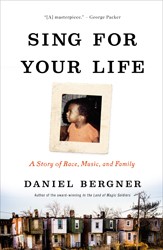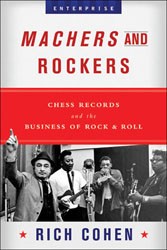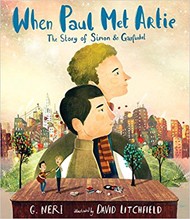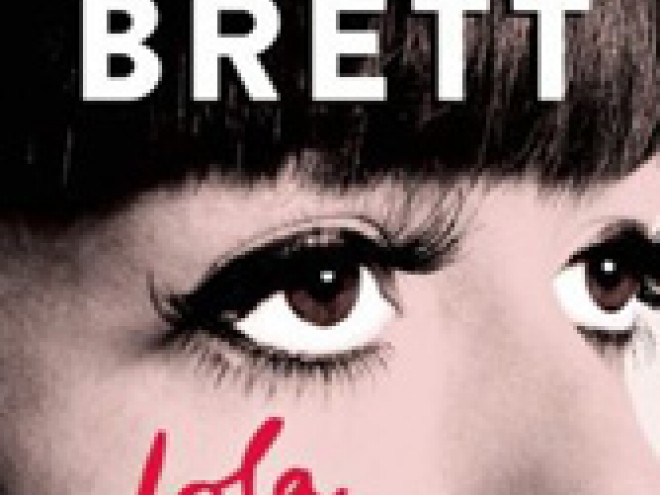Rabbi Joshua Eli Plaut, PhD is the author of A Kosher Christmas: ’Tis the Season to Be Jewish (Rutgers University Press). Visit his web site and seasonal blog at www.akosherchristmas.org. He welcomes your own unique stories of being Jewish at Christmas for a new book of personal stories about this subject. You can email him at: jplaut@afrmc.org. He is blogging here today for Jewish Book Council’s Visiting Scribe series.
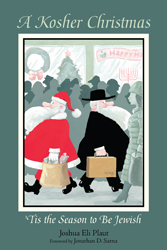 Here is a recent American tale of old wine in new vessels. Part of our national folklore reveals that Woody Guthrie, the iconic American folk troubadour and songwriter, composed Hanukkah songs. In a 2003 concert, the Klezmatics, a popular Grammy Award-winning Klezmer band, performed Hanukkah songs showcasing lyrics written from 1949 through the early 1950s by Woody Guthrie. The lyrics had laid fallow and long-forgotten in Guthrie’s archives until their discovery in 1998 by Woody’s daughter, Nora Guthrie. Nora asked the Klezmatics to write original music for the lyrics, which fuses strains of Klezmer music with American folk and bluegrass. The 2006 album, “Woody Guthrie’s Happy Joyous Hanuka,” comprises many different songs, including “Happy, Joyous Hanuka” and “Hanuka Tree.” Two of the eight songs, “The Many And The Few” and “Hanuka Dance,” had lyrics and melodies penned entirely by Guthrie. The songs were in part biographical. Woody was married to Marjorie Mazia, a Jewish dancer with the Martha Graham Dance Company who was the daughter of Aliza Greenblatt, an activist and Yiddish poet. Nora remembers “For Hanukkah actually, we had a hat — we didn’t get presents — but we had a hat with different amounts of Hanukkah gelt, and every night we’d pick out five cents or twenty-five cents of gelt. My mother played piano, and we used to sing and dance every night.”*
Here is a recent American tale of old wine in new vessels. Part of our national folklore reveals that Woody Guthrie, the iconic American folk troubadour and songwriter, composed Hanukkah songs. In a 2003 concert, the Klezmatics, a popular Grammy Award-winning Klezmer band, performed Hanukkah songs showcasing lyrics written from 1949 through the early 1950s by Woody Guthrie. The lyrics had laid fallow and long-forgotten in Guthrie’s archives until their discovery in 1998 by Woody’s daughter, Nora Guthrie. Nora asked the Klezmatics to write original music for the lyrics, which fuses strains of Klezmer music with American folk and bluegrass. The 2006 album, “Woody Guthrie’s Happy Joyous Hanuka,” comprises many different songs, including “Happy, Joyous Hanuka” and “Hanuka Tree.” Two of the eight songs, “The Many And The Few” and “Hanuka Dance,” had lyrics and melodies penned entirely by Guthrie. The songs were in part biographical. Woody was married to Marjorie Mazia, a Jewish dancer with the Martha Graham Dance Company who was the daughter of Aliza Greenblatt, an activist and Yiddish poet. Nora remembers “For Hanukkah actually, we had a hat — we didn’t get presents — but we had a hat with different amounts of Hanukkah gelt, and every night we’d pick out five cents or twenty-five cents of gelt. My mother played piano, and we used to sing and dance every night.”*
At the 2003 debut concert with the Klezmatics at the 92nd Street Y in Manhattan, folk legend Arlo Guthrie, Woody’s son and Nora’s brother, joked that as children they would dance “around the Hanukkah tree.” “Happy Joyous Hanuka” counts down each candle on the menorah (“Seven for the sons of Hannah that died/Six for kings and the tricks they tried/Five for the brothers Maccabee”), while “Hanuka Tree” has a lively simple melody (“Round and around my Hanukah tree/Round and around I go/Round and around my Hanukah tree/Because I love you so”). According to Nora, most of Woody Guthrie’s Hanukkah songs seem to 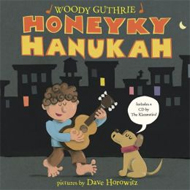 have been written in November or December within five days of each other “because he had bookings in December for children’s Hanukkah parties in assorted Brooklyn community centers.” As was his wont, Woody would “write songs only for the gig a few days before and then go on to other songs for other gigs.” For the Guthrie family, a family of improvisers not of traditions and for whom the approach to religion was “all or none,” the tree was a “Christmas tree, a Hanukkah tree, and a holiday tree. It was a fluid thing!”
have been written in November or December within five days of each other “because he had bookings in December for children’s Hanukkah parties in assorted Brooklyn community centers.” As was his wont, Woody would “write songs only for the gig a few days before and then go on to other songs for other gigs.” For the Guthrie family, a family of improvisers not of traditions and for whom the approach to religion was “all or none,” the tree was a “Christmas tree, a Hanukkah tree, and a holiday tree. It was a fluid thing!”
Indeed, the popularization of Woody Gutherie’s Hanukkah songs by the Klezmatics demonstrates the vital role that music plays as an intrinsic cultural force contributing to the Americanization of this Jewish holiday, as it coexists with Christmas.
Joshua Eli Plaut is Executive Director of American Friends of Rabin Medical and the Rabbi of Metropolitan Synagogue in Manhattan. He is an historian, photo-ethnographer, and cultural anthropologist, and is also the author of Greek Jewry in the Twentieth Century, 1913 – 1983: Patterns of Jewish Communal Survival in the Greek Provinces before and after the Holocaust (Fairleigh Dickinson University Press)
*Telephone interview with Nora Guthrie, August 17, 2011.
Related Content:
- Read more posts by Joshua Eli Plaut for the Visiting Scribe series
- Bob Dylan’s Christmas Album: The Jewish Contribution to the ‘Holiday’ Genre by Seth Rogovoy
- Honeyky Hanukah by Woody Guthrie
